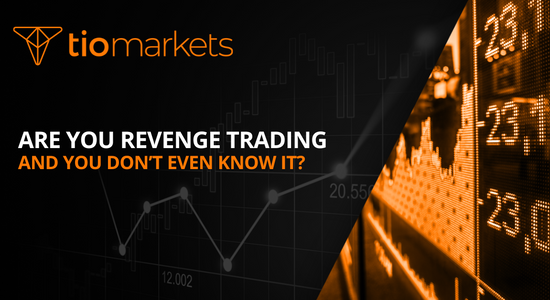How to Use Stochastic Oscillator in Breakout Trading?
BY TIO Staff
|iunie 20, 2024Breakout trading is a strategy that traders use to enter the market when the price moves outside a defined price range. The stochastic oscillator, a momentum indicator, plays a pivotal role in identifying potential breakout opportunities. This article delves into the mechanics of using the stochastic oscillator in breakout trading, offering a comprehensive guide to maximize trading efficiency and effectiveness.
Understanding the Stochastic Oscillator
The stochastic oscillator is a technical analysis tool used to gauge momentum by comparing a particular closing price of an asset to its high-low range over a specific period. It's instrumental in identifying overbought and oversold conditions in the market, providing traders with insights into potential reversal points.
Components of the Stochastic Oscillator
The stochastic oscillator consists of two lines: the %K line, which measures the current market condition relative to its high-low range, and the %D line, a moving average of the %K line. The interplay between these two lines offers valuable signals for traders.
Typically, the oscillator is plotted on a scale from 0 to 100. Readings above 80 indicate that the market is overbought, while readings below 20 suggest that it is oversold. These thresholds are crucial for traders looking to capitalize on potential market reversals.
Setting Up the Stochastic Oscillator for Breakout Trading
To effectively use the stochastic oscillator in breakout trading, it's essential to adjust its settings according to the market's volatility and the trader's strategy. The standard setting for the stochastic oscillator is 14 periods, which can be modified based on the trader's preference and the asset's characteristics.
Adjusting the sensitivity of the oscillator can help traders better align the signals with their trading strategies. A lower period setting makes the oscillator more sensitive to price movements, potentially leading to early signals, while a higher setting offers smoother, delayed signals.
Integrating Stochastic Oscillator with Breakout Trading
Breakout trading strategies seek to take advantage of price movements that exceed a defined range. The stochastic oscillator enhances this strategy by providing timely signals that indicate the strength of the breakout.
Identifying Breakout Opportunities
When the price of an asset breaks out of its range, the stochastic oscillator can confirm the strength of the move. A breakout accompanied by a stochastic signal moving out of the overbought or oversold territory can indicate a strong, momentum-backed move, offering a high-probability trading opportunity.
Conversely, if the price breaks out but the stochastic oscillator does not support the move (e.g., remains in overbought or oversold territory), it may suggest a weak breakout that lacks momentum, cautioning traders against entering the trade.
Timing Entries and Exits
Once a breakout has been identified and confirmed by the stochastic oscillator, the next step is to determine the optimal entry and exit points. Traders can enter a trade when the %K line crosses above the %D line after a breakout, signaling increasing momentum. Exit signals can be identified when the stochastic oscillator begins to diverge from the price movement, indicating a potential reversal or slowdown in momentum.
It's also crucial to set stop-loss orders to manage risk effectively. A common approach is to place a stop-loss just outside the breakout range, ensuring that trades are exited if the breakout fails to sustain its momentum.
Risks and Considerations
While the stochastic oscillator can significantly enhance breakout trading strategies, it's important to be aware of the risks and considerations involved.
False Signals and Market Noise
One of the main challenges in using the stochastic oscillator is the potential for false signals, particularly in volatile markets. Traders must combine the oscillator's signals with other technical analysis tools and consider the broader market context to filter out false positives.
Over-reliance on the Indicator
Another risk is the over-reliance on the stochastic oscillator. No single indicator can provide all the answers in trading. Successful traders use a combination of technical analysis tools, fundamental analysis, and market sentiment to make informed decisions.
Advanced Strategies for Breakout Trading
As traders gain experience in breakout trading with the stochastic oscillator, they can explore advanced strategies to further enhance their trading performance. One such strategy involves combining the stochastic oscillator with other technical indicators to validate breakout signals.
For example, traders may use moving averages in conjunction with the stochastic oscillator to confirm breakout directions. When the stochastic oscillator signals a potential breakout, traders can look for confirmation from moving average crossovers to strengthen their conviction in the trade.
Additionally, incorporating volume analysis can provide valuable insights into the strength of a breakout. High volume accompanying a breakout supported by the stochastic oscillator can indicate strong market participation, increasing the likelihood of a successful trade.
Implementing Risk Management Techniques
Effective risk management is crucial in breakout trading to protect capital and minimize losses. Traders can implement various risk management techniques, such as position sizing based on the volatility of the asset, setting predetermined stop-loss levels, and diversifying their trading portfolio to spread risk.
Moreover, utilizing trailing stops can help traders secure profits as the trade moves in their favor. Trailing stops adjust automatically as the price advances, locking in gains and protecting against potential reversals.
Psychological Aspects of Breakout Trading
Successful breakout trading goes beyond technical analysis and strategy implementation; it also involves managing psychological factors that can impact trading decisions. Traders must maintain discipline, patience, and emotional control to navigate the uncertainties of the market.
Developing a trading plan with clear entry and exit rules, as well as risk management guidelines, can help traders stay focused and avoid impulsive decisions driven by emotions. Regularly evaluating and adjusting the trading plan based on performance can lead to continuous improvement and adaptability in dynamic market conditions.
Dealing with Trading Psychology Challenges
Traders often face psychological challenges such as fear of missing out (FOMO), fear of loss, and overconfidence. Recognizing these emotions and their impact on decision-making is essential for maintaining a rational and disciplined approach to breakout trading.
Practicing mindfulness techniques, maintaining a trading journal to reflect on past trades, and seeking feedback from mentors or peers can help traders address psychological hurdles and enhance their overall trading mindset.
Conclusion
The stochastic oscillator is a powerful tool for traders looking to capitalize on breakout opportunities. By understanding its components, adjusting its settings to suit individual strategies, and integrating its signals with breakout trading, traders can enhance their trading efficiency and effectiveness. However, it's crucial to be mindful of the risks and to use the stochastic oscillator as part of a comprehensive trading strategy.
###
Start Your Breakout Trading Journey with TIOmarkets
Ready to put your knowledge of the stochastic oscillator to the test in the dynamic world of breakout trading? Join TIOmarkets, the top-rated forex broker trusted by over 170,000 traders across 170 countries. With our robust online trading platform, you can trade over 300 instruments across Forex, indices, stocks, commodities, and futures markets—all with low fees. Plus, enhance your trading skills with our comprehensive suite of educational resources and step-by-step guides. Don't miss out on the opportunity to elevate your trading experience. Create a Trading Account today and start your journey towards trading success!

Risk Disclaimer - of Liability: The authors, publishers, and distributors of this article are not responsible for any losses, damages, or liabilities that may arise from the use of the information contained herein. Readers are encouraged to seek professional advice from a qualified financial advisor before engaging in any trading activities.
By accessing this article, you acknowledge and agree that you are fully responsible for your trading decisions and any resulting outcomes. Always conduct thorough research and consider your financial situation, risk tolerance, and investment objectives before making any trading decisions.
Join us on social media

Behind every blog post lies the combined experience of the people working at TIOmarkets. We are a team of dedicated industry professionals and financial markets enthusiasts committed to providing you with trading education and financial markets commentary. Our goal is to help empower you with the knowledge you need to trade in the markets effectively.
Related Posts
undefined



